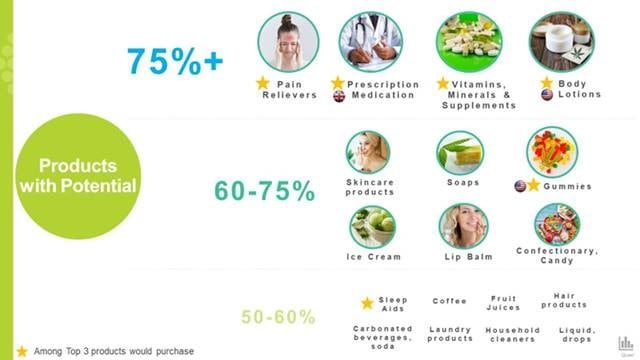Innovation insight agency Buzzback conducted a consumer survey in March, before coronavirus lockdowns were initiated in Europe or the US. The researchers wanted to look at what ingredients would help brands stand out in the fast-growth wellness space in the UK and US.
According to the consultancy, to compete in the category effectively, brands need to ‘anticipate the market’s needs’ and offer ‘unique alternatives’ to already seen products. This means understanding what motivates purchase intent and the gains that people are looking for from health products. Buzzback therefore asked consumers about ‘how they live their lives’, not just what they already buy.
More than half of those interviewed said they are open to trying products with ingredients that are new to them but are perceived as delivering particular health outcomes.
“Consumer centricity is paramount if you want to succeed in such a competitive market. Brands need to focus on why people would like to buy and use a certain product by understanding their emotions, their worries and their needs. By identifying these elements, companies can truly innovate in the right direction and deliver value to their customers,” Buzzback founder and CEO Carol Fitzgerald said.
Five ‘trendiest’ ingredients
Buzzback identified the ‘trendiest’ ingredients based on how open consumers would be to use products that include a certain substance.
Here are the top five for the UK:
In the US, the top five ingredients showed consumers awareness of different elements, showing some regional distinctions
Omega-3 and probiotics make the top five in both countries. Elements such as turmeric and rhiodiola, popular in the UK, are replaced by curecumin, ashwagandha and protein in the US.
While only one-third of consumers have a ‘complete understanding’ of each ingredient, they are still keen on trying them and are particularly seeking out specific benefits for issues they experience.
“Consumers are looking for new benefits from ingredients – mostly for stress, pain, relaxation, or personal care benefits such as acne treatments or skin improvement,” Fitzgerald told FoodNavigator.
In total, 65% of respondents said they are looking for stress relief remedies, with pain, anxiety and depression management being some of the main concerns. Around half of consumers would like to see some personal care benefits from the use of a new product, for example skin improvement.
From the ingredients listed above, probiotic supplements are already popular amongst consumers, with 31% of them purchasing products with this ingredient.
Innovation upside in ‘unexpected’ categories
While products like omega-3s or pre- and probiotics might be common in categories such as supplementation or skincare, the current NPD drive from brands points to the potential these ingredients offer ‘unexpected’ product formats.
Fitzgerald elaborated: “From what we’ve observed so far, the innovation really centres around new categories and new forms adopting these ingredients. Some of the top ones would be ‘expected’ by consumers in certain categories such as supplements or topic items (skin care, lotions, etc). Newer categories such as coffee, other beverages, foods and even household items are ones where consumers may not expect to see these kinds of ingredients.”

“Within foods and beverages even unexpected product categories can contain functional ingredients - ones such as coffee, ice cream, candy, juices,” she noted.
This innovation drive will enable ‘trendy’ health and wellness ingredients to move out of the supplement space and into everyday foods, tipping to the mainstream.
Fitzgerald suggested that this is ‘especially’ the case as bigger brands create awareness through product launches spotlighting these ingredients. “They will bring greater acceptance and more consumers will experiment.”
Driving awareness: Social media and NPD
So what makes these ingredients ‘trendy’? What is supporting consumer awareness of these ingredients?
According to Fitzgerald, awareness reflects a combination of factors.
“Most consumer awareness is supported by brands (even upstarts) promoting the benefits of new ingredients, ideally supported by some kind of evidence. Then word of mouth (38%) and social media channels (46%) are used for consumers to share and influence each other in talking about new products and/or the benefits related to ingredients. In the case of CBD, there has also been legislation around safety and acceptance which consumers are also following,” she noted.
Buzzback found 30% of people turn to online research, TV commercials or in-store displays for information.




